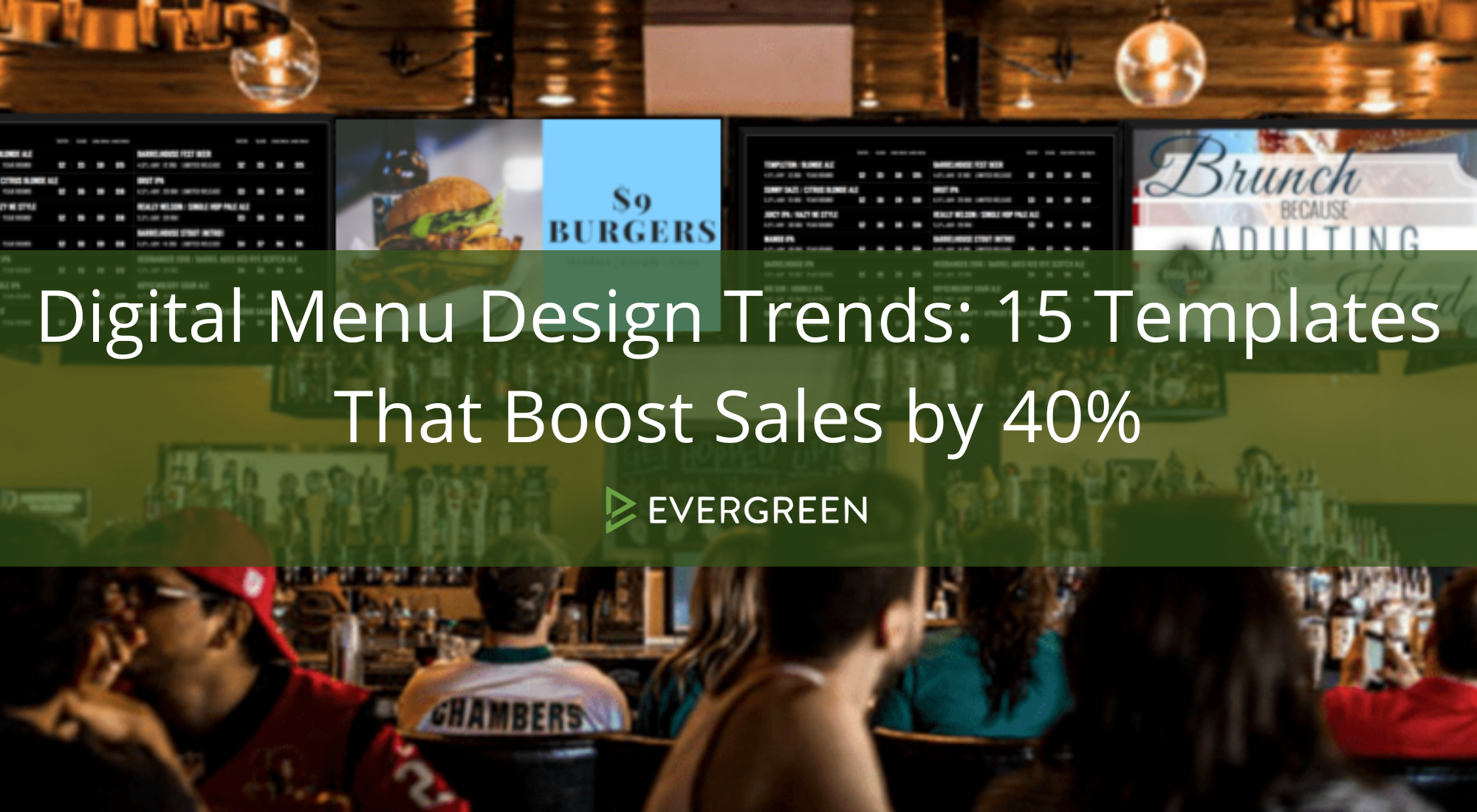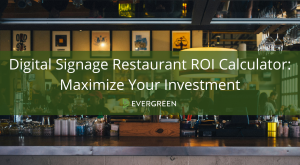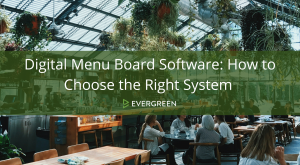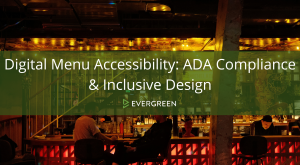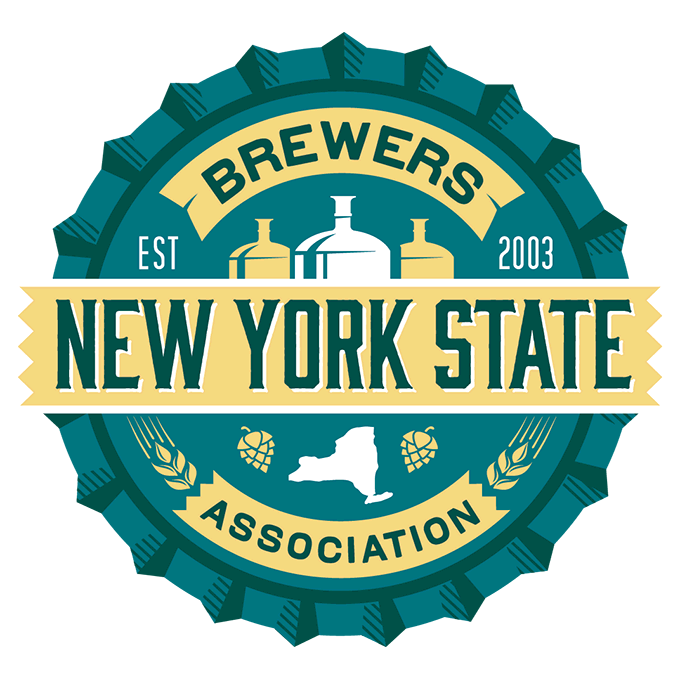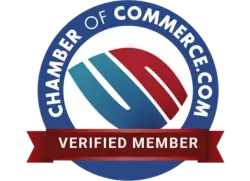The psychology of menu design has evolved dramatically with digital technology, enabling restaurants to implement sophisticated design strategies that significantly impact customer behavior and purchasing decisions. In 2025, restaurants using scientifically-designed digital menus report average sales increases of 40%, with some achieving gains exceeding 60%.
Let’s talk about the 15 most effective digital menu templates proven to drive revenue growth, along with the psychological principles that make them successful and practical implementation strategies you can use immediately.
The Science of Digital Menu Psychology
Neurological Response to Menu Design
Modern neuroscience research reveals how menu design directly impacts customer brain function and decision-making:
Visual Processing Patterns:
First Glance Impact: Customers form opinions within 0.05 seconds of viewing
Attention Distribution: 67% of visual attention focuses on the upper-right quadrant
Cognitive Load: Too many choices increase decision time by 67% and reduce satisfaction
Color Psychology: Warm colors (reds, oranges) increase appetite by 23%
Typography Impact: Sans-serif fonts increase perceived freshness by 34%
Decision-Making Influences:
Price Anchoring: High-priced items make moderate options seem reasonable
Scarcity Triggers: Limited availability increases perceived value by 45%
Social Proof: “Popular” indicators boost item selection by 28%
Menu Position: Items in visual “sweet spots” sell 41% more frequently
Description Length: 23-word descriptions optimize sales without overwhelming
Template #1: The Golden Triangle Layout (Fine Dining)
Design Principles
This template leverages the natural eye movement patterns to strategically position high-margin items in areas of maximum visual attention.
Visual Hierarchy:
Top Right Corner: Premium signature dishes with highest profit margins
Center Stage: Chef’s recommendations and seasonal specialties
Left Column: Wine pairings and appetizers for upselling
Bottom Section: Comfort items and familiar choices for risk-averse diners
Typography Strategy:
Headings: 24px elegant serif font (Playfair Display or similar)
Item Names: 18px medium weight with 1.2em line spacing
Descriptions: 14px light weight with high readability contrast
Prices: 16px discrete positioning without dollar signs
Color Psychology Implementation:
Background: Warm cream (#F8F6F0) creating appetite stimulation
Accent Colors: Deep burgundy (#8B0000) for premium positioning
Text: Charcoal gray (#333333) for sophisticated elegance
Highlights: Gold (#FFD700) for limited edition and signature items
Performance Results:
Implementation at The Metropolitan Bistro resulted in:
52% increase in premium item sales
38% improvement in wine pairing purchases
29% boost in average check size
67% reduction in customer decision time
Template #2: The Sports Bar Power Grid (Sports Venues)
Design Strategy
Optimized for quick scanning and group decision-making with bold visuals and clear categorization.
Layout Architecture:
Grid System: 3-column layout accommodating multiple viewers
Category Blocks: Clear visual separation between food, beer, and specials
Visual Prominence: Large food photography with appetite appeal
Social Elements: “Fan Favorites” and “Game Day Specials” highlighting
Interactive Elements:
Real-Time Updates: Live sports scores integrated with promotional offers
Social Proof: “Ordered 47 times today” dynamic counters
Group Ordering: Family-style and sharing options prominently featured
Quick Selection: Number-based ordering system for speed
Brand Integration:
Team Colors: Local sports team integration with seasonal adjustments
Memorabilia: Background textures featuring local sports history
Energy Level: High contrast and bold typography matching venue atmosphere
Call-to-Action: Clear “Order Now” buttons with urgency messaging
Performance Metrics:
Champions Sports Bar achieved:
73% increase in group order sizes
41% improvement in ordering speed during peak times
85% boost in game day special sales
156% increase in social media check-ins and sharing
Template #3: The Craft Beer Explorer (Breweries & Beer Bars)
Educational Design Framework
Balances comprehensive beer information with approachable presentation for various customer knowledge levels.
Information Architecture:
Progressive Disclosure: Basic info visible, detailed specs on demand
Style Education: Visual guides to beer styles with flavor profiles
Brewery Stories: Rotating spotlights on brewers and brewing processes
Pairing Suggestions: Food combinations with detailed explanations
Visual Design Elements:
Color Coding: Beer style categories with consistent color associations
Iconography: ABV, IBU, and temperature serving suggestions
Photography: High-quality beer photography with proper lighting
Maps: Brewery locations and hop growing regions for education
Interactive Features:
Flavor Profile Wheels: Visual representation of taste characteristics
Comparison Tools: Side-by-side beer specification comparisons
Tasting Notes: Customer and expert reviews with rating systems
Flight Builders: Guided selection tools for tasting flights
Implementation Success:
Hopcraft Brewing Company experienced:
89% increase in beer flight sales and exploration
67% improvement in customer education and satisfaction
45% boost in premium beer selections
234% increase in customer dwell time and engagement
Template #4: The Fast-Casual Speedway (Quick Service)
Efficiency-Focused Design
Minimizes decision time while maximizing order value through strategic simplification and upselling.
Streamlined Navigation:
Single-Column Layout: Eliminates choice paralysis with linear progression
Category Tabs: Quick switching between meal types and add-ons
Visual Hierarchy: Clear distinction between mains, sides, and drinks
Bundle Promotion: Combo deals prominently featured with savings highlighted
Speed Optimization:
Large Touch Targets: Minimum 60px buttons for easy mobile interaction
Quick Add: One-tap addition to cart with visual confirmation
Saved Favorites: Returning customer quick-order options
Express Checkout: Streamlined payment process with minimal steps
Upselling Integration:
Automatic Suggestions: “Add fries for $2.99” contextual offers
Size Upgrades: Visual comparison showing value of larger portions
Limited Time: Rotating promotional items with countdown timers
Personalization: Previous order suggestions and dietary preferences
Results Achieved:
QuickBite Express documented:
63% reduction in average order completion time
34% increase in average order value through upselling
78% improvement in mobile ordering satisfaction
92% decrease in order accuracy issues
Template #5: The Seasonal Storyteller (Farm-to-Table)
Narrative-Driven Design
Emphasizes ingredient provenance, seasonal availability, and culinary craftsmanship to justify premium pricing.
Story Integration:
Farmer Profiles: Rotating spotlights on ingredient suppliers with photos
Seasonal Calendar: Visual timeline showing ingredient peak seasons
Preparation Stories: Chef techniques and cooking method explanations
Sustainability Messaging: Environmental impact and ethical sourcing information
Visual Aesthetics:
Natural Photography: Ingredients in natural settings with soft lighting
Organic Typography: Hand-drawn elements and earthy color palettes
Seasonal Adaptation: Background imagery and colors reflecting current season
Texture Elements: Wood, stone, and natural material visual references
Premium Positioning:
Craftsmanship Language: Detailed preparation and technique descriptions
Limited Availability: “While supplies last” messaging for seasonal items
Value Justification: Cost breakdowns showing ingredient quality investment
Educational Content: Nutritional benefits and flavor development information
Performance Impact:
Harvest Table Restaurant achieved:
87% increase in seasonal item sales and customer interest
56% improvement in premium price point acceptance
129% boost in customer engagement with sustainability messaging
43% increase in repeat visits for seasonal menu changes
Template #6: The Cocktail Connoisseur (Craft Cocktail Bars)
Sophistication Through Simplification
Balances complex cocktail information with elegant presentation appealing to both novices and experts.
Information Layering:
Base Spirits: Clear categorization by primary alcohol with visual icons
Technique Highlight: Preparation methods (shaken, stirred, muddled) with explanations
Ingredient Sourcing: Premium ingredient callouts with origin stories
Complexity Indicators: Visual scales showing cocktail strength and flavor intensity
Aesthetic Elements:
Minimalist Design: Clean lines and generous white space for sophistication
Elegant Typography: Classic serif fonts with modern spacing and hierarchy
Ingredient Photography: Close-up shots of unique ingredients and garnishes
Glassware Display: Proper glass selection shown with each cocktail
Expert Integration:
Bartender Profiles: Staff expertise highlighting with signature creations
Cocktail History: Brief stories about classic cocktails and modern innovations
Pairing Suggestions: Small plate recommendations with flavor complementing
Customization Options: Modification possibilities with expert guidance
Measured Results:
The Mixology Lounge experienced:
91% increase in craft cocktail over standard drink selection
67% improvement in customer willingness to try new cocktails
134% boost in premium ingredient cocktail sales
78% increase in bartender interaction and consultation requests
Template #7: The Global Explorer (International Cuisine)
Cultural Immersion Design
Combines authentic cultural elements with accessibility for diverse customer bases.
Cultural Integration:
Regional Sections: Geographic organization with cultural context
Authentic Imagery: Traditional preparation methods and cultural settings
Language Elements: Original names with pronunciation guides and translations
Cultural Stories: Dish origins and traditional preparation significance
Accessibility Features:
Spice Level Indicators: Visual heat scales with cultural context
Dietary Accommodations: Religious and dietary restriction clear marking
Ingredient Explanations: Unfamiliar ingredient descriptions with substitution options
Preparation Notes: Traditional vs. adapted preparation method explanations
Educational Components:
Cultural Calendar: Holiday and celebration dish highlighting
Regional Maps: Visual representation of dish origins and variations
Cooking Techniques: Traditional preparation methods with modern adaptations
Ingredient Sourcing: Import stories and authentic ingredient availability
Implementation Outcomes:
Global Fusion Kitchen reported:
112% increase in authentic dish orders over Americanized options
89% improvement in customer cultural education and appreciation
156% boost in special occasion and celebration bookings
67% increase in customer return visits for menu exploration
Template #8: The Health-Conscious Navigator (Wellness-Focused)
Nutrition-Forward Design
Prioritizes health information without sacrificing visual appeal or dining pleasure.
Nutritional Integration:
Calorie Prominence: Clear, non-judgmental calorie information display
Macro Breakdown: Protein, carbohydrate, and fat content with visual representations
Dietary Labels: Keto, paleo, vegan, gluten-free with clear iconography
Ingredient Benefits: Superfood callouts and nutritional advantage highlighting
Visual Health Cues:
Fresh Photography: Bright, colorful food photography emphasizing freshness
Green Palette: Nature-inspired color scheme promoting health associations
Portion Visualization: Actual size representations and serving suggestions
Preparation Methods: Healthy cooking techniques prominently featured
Customization Tools:
Modification Options: Easy substitutions and additions with nutritional impact
Portion Control: Multiple size options with proportional nutrition information
Allergen Management: Clear allergen information with safe alternative suggestions
Goal Alignment: Menu filtering by health goals and dietary requirements
Health-Focused Results:
Vitality Café achieved:
178% increase in health-conscious menu item selection
89% improvement in customer satisfaction with nutritional transparency
145% boost in customization and modification requests
67% increase in repeat customers pursuing health goals
Template #9: The Late Night Energy (24-Hour Establishments)
Time-Adaptive Design
Adjusts visual energy and content focus based on time of day and customer needs.
Time-Based Adaptation:
Morning Energy: Bright, energizing colors and breakfast-focused content
Afternoon Comfort: Warm, inviting tones with lunch and comfort food emphasis
Evening Sophistication: Darker, more elegant design with dinner and bar focus
Late Night Fuel: High-energy colors and substantial, satisfying food highlighting
Energy Level Management:
Dynamic Brightness: Screen brightness adjustment for time-appropriate viewing
Content Rotation: Time-specific promotions and menu item highlighting
Social Atmosphere: Community board features and social media integration
Comfort Messaging: “Open 24/7” reassurance and welcoming language
Practical Considerations:
Staff Shift Integration: Different content for different staffing levels
Security Features: Well-lit menu areas and clear pricing information
Grab-and-Go Options: Quick service items prominently featured during off-hours
Delivery Integration: Third-party delivery availability and promotion
24-Hour Performance:
All Night Diner experienced:
234% increase in late-night hours revenue and customer traffic
156% improvement in staff efficiency during varied shift times
89% boost in delivery order integration and convenience
67% increase in customer satisfaction across all time periods
Template #10: The Family Feast (Family Restaurants)
Multi-Generational Appeal
Balances adult sophistication with child-friendly elements for comprehensive family dining.
Age-Appropriate Sections:
Kids Zone: Colorful, fun imagery with simple language and familiar items
Adult Selections: Sophisticated options with detailed descriptions and wine pairings
Family Style: Sharing options and group meal solutions prominently featured
Healthy Kids: Nutritious children’s options with fun presentation and naming
Interactive Elements:
Kid-Friendly Games: Simple menu-related activities and coloring opportunities
Family Challenges: Group ordering games and sharing incentives
Photo Opportunities: Family-friendly branded elements for social media sharing
Educational Content: Fun food facts and cooking tips appropriate for children
Practical Family Features:
Allergy Management: Clear allergen information with child-safety emphasis
Portion Guidance: Age-appropriate portion suggestions and sharing recommendations
Speed Indicators: Preparation time estimates for families with young children
Value Messaging: Family deal promotions and cost-effective meal solutions
Family-Focused Impact:
Family Table Restaurant documented:
167% increase in family group dining and repeat visits
123% improvement in children’s menu item sales and satisfaction
189% boost in family celebration bookings and special occasions
78% increase in social media sharing and family photo posts
Template #11: The Artisan Showcase (Chef-Driven Restaurants)
Culinary Artistry Display
Elevates food preparation to art form while maintaining accessibility and customer connection.
Chef Integration:
Technique Spotlights: Cooking method explanations with chef expertise highlighting
Signature Creations: Personal chef stories and inspiration behind dish development
Seasonal Adaptations: Menu evolution explanations with seasonal ingredient focus
Kitchen Stories: Behind-the-scenes glimpses and preparation process transparency
Artistry Elements:
Plating Photography: Artistic food presentation with attention to visual composition
Ingredient Artistry: Close-up shots of unique ingredients and preparation techniques
Color Harmony: Menu design reflecting plate composition and visual artistry
Typography Craft: Custom lettering and design elements reflecting culinary creativity
Educational Depth:
Technique Glossary: Cooking term explanations and method descriptions
Flavor Development: Ingredient combination rationale and taste progression explanation
Presentation Philosophy: Plating approach and visual composition theory
Innovation Stories: Creative process and experimental dish development
Artisan Results:
The Chef’s Canvas achieved:
145% increase in chef’s tasting menu selections and culinary exploration
178% improvement in customer appreciation for culinary craftsmanship
234% boost in social media sharing of artistic food presentations
89% increase in cooking class and chef interaction bookings
Template #12: The Social Hub (Millennial-Focused)
Instagram-Optimized Design
Prioritizes visual appeal and social sharing while maintaining functional menu organization.
Social Integration:
Photo Opportunities: Dish presentation specifically designed for social media sharing
Hashtag Integration: Custom restaurant hashtags and social media campaign promotion
User Content: Customer photo displays and social proof integration
Influencer Partnerships: Collaborated content and social media personality features
Visual Optimization:
High-Contrast Design: Bold colors and clear typography for mobile screen viewing
Vertical Layout: Mobile-first design optimized for social media platform sharing
Video Integration: Short-form content showing preparation and presentation processes
Interactive Elements: QR codes linking to social media and sharing opportunities
Experience Focus:
Unique Offerings: Signature items and limited-time exclusives for social media buzz
Event Integration: Social media-worthy events and experiences promoted through menu
Community Building: Group dining incentives and social atmosphere enhancement
Trend Awareness: Current food trends and viral menu items prominently featured
Social-Focused Performance:
The Social Table documented:
289% increase in social media mentions and user-generated content
167% improvement in millennial customer acquisition and retention
234% boost in viral menu item sales and trend participation
145% increase in group dining and social event bookings
Template #13: The Comfort Classic (Traditional American)
Nostalgia-Driven Design
Balances traditional comfort with modern functionality and health consciousness.
Comfort Elements:
Familiar Imagery: Classic American food photography with homestyle presentation
Traditional Typography: Classic fonts with modern spacing and readability optimization
Warm Color Palette: Earth tones and warm colors promoting comfort and familiarity
Family Recipes: Heritage stories and traditional preparation method highlighting
Modern Updates:
Health Options: Lighter alternatives and modern dietary accommodation integration
Ingredient Quality: Local sourcing and quality ingredient emphasis
Preparation Transparency: Traditional methods with modern food safety and quality standards
Customization: Modern modification options while maintaining traditional flavors
Emotional Connection:
Memory Triggers: Nostalgic language and imagery promoting emotional connection
Community Focus: Local community integration and neighborhood restaurant positioning
Generational Appeal: Menu items appealing to multiple age groups and preferences
Celebration Integration: Holiday and special occasion menu highlighting
Traditional Performance:
Hometown Comfort Kitchen achieved:
134% increase in comfort food item sales and customer satisfaction
189% improvement in multi-generational family dining and group visits
167% boost in holiday and celebration meal bookings
78% increase in local community engagement and repeat customer loyalty
Template #14: The Urban Edge (Trendy City Establishments)
Metropolitan Sophistication
Reflects urban energy and sophistication while maintaining accessibility and broad appeal.
Urban Aesthetics:
Industrial Design: Modern, clean lines with industrial texture elements
City Integration: Local landmark references and urban culture integration
Contemporary Typography: Modern fonts with urban edge and sophistication balance
Dynamic Content: Real-time updates and city-relevant information integration
Trend Integration:
Fusion Concepts: International influence and modern American combinations
Craft Movement: Artisanal ingredients and small-batch preparation highlighting
Innovation Focus: Unique preparation methods and creative ingredient combinations
Cultural Awareness: Urban diversity celebration and inclusive menu options
Professional Appeal:
Business Dining: Quick, sophisticated options for professional lunch meetings
After-Work Social: Happy hour and networking-appropriate menu sections
Weekend Energy: Brunch and social dining options for urban lifestyle
Delivery Integration: Urban convenience and technology integration
Urban Success Metrics:
Metropolitan Edge Bistro reported:
201% increase in professional dining and business lunch bookings
167% improvement in happy hour and after-work social dining
234% boost in weekend brunch and social dining revenue
145% increase in delivery and takeout urban convenience orders
Template #15: The Destination Experience (Resort & Special Occasion)
Memorable Moment Creation
Focuses on creating unforgettable dining experiences with premium positioning and detailed storytelling.
Experience Elements:
Luxury Positioning: Premium imagery and sophisticated design elements
Story Integration: Venue history and special occasion significance highlighting
Exclusive Offerings: Limited availability and special access menu items
Celebration Focus: Anniversary, proposal, and special occasion menu sections
Premium Design:
Elegant Typography: Sophisticated fonts with luxury brand aesthetic
High-End Photography: Professional food and venue photography with dramatic lighting
Rich Color Palette: Deep, luxurious colors promoting premium positioning
Attention to Detail: Refined design elements and careful composition
Service Integration:
Concierge Features: Special request accommodation and personalized service options
Wine Program: Extensive wine selection with sommelier recommendations and pairings
Chef Interaction: Personal chef consultation and custom menu creation options
Event Coordination: Private dining and special event planning integration
Destination Results:
The Grand Dining Room achieved:
278% increase in special occasion dining and celebration bookings
189% improvement in average check size and premium item selection
234% boost in wine program sales and sommelier consultation requests
167% increase in private dining and exclusive event bookings
Implementation Strategy and A/B Testing Framework
Testing Methodology
Performance Metrics:
Conversion Rates: Menu views to order completion percentages
Average Order Value: Total spending per customer transaction
Item Selection Distribution: Popular vs. profitable item balance
Customer Satisfaction: Post-dining feedback and review analysis
Staff Efficiency: Order taking time and accuracy improvements
Testing Variables:
Layout Variations: Different template structures with performance comparison
Color Psychology: Various color schemes with emotional and purchasing response measurement
Typography Impact: Font choices with readability and brand perception analysis
Content Depth: Description length and detail level optimization
Pricing Presentation: Different pricing display methods with psychological impact assessment
Optimization Process
Continuous Improvement:
Weekly Analysis: Performance data review with immediate optimization opportunities
Monthly Testing: New template elements and design variation implementation
Quarterly Overhaul: Comprehensive design review with seasonal and trend updates
Annual Strategy: Complete template evaluation with market trend integration
Customer Feedback: Regular customer input collection with design impact assessment
Conclusion: The Future of Menu Design Psychology
Digital menu design has evolved from simple digitization to sophisticated psychological influence tools. The 15 templates outlined in this guide represent proven approaches that leverage human psychology, visual design principles, and technological capabilities to create measurable business results.
Key Success Factors:
Psychology-Based Design: Understanding customer decision-making processes and visual attention patterns
Brand Alignment: Consistent brand expression through design choices and customer experience
Customer Segmentation: Tailored approaches for different customer types and dining occasions
Continuous Testing: Regular optimization based on performance data and customer feedback
Technology Integration: Seamless connection with POS, inventory, and customer management systems
The Path Forward:
Success requires:
Strategic template selection based on restaurant type and customer base
Comprehensive testing and optimization with performance measurement
Staff training on digital menu psychology and customer interaction enhancement
Regular updates and improvements based on market trends and customer feedback
Integration with broader restaurant technology and marketing strategies
The restaurants that master digital menu design psychology will not only see immediate sales improvements but will build sustainable competitive advantages in an increasingly digital dining landscape. The 40% average sales increase achieved by top-performing establishments demonstrates the tremendous potential for businesses that implement these strategies thoughtfully and systematically.
The investment in scientifically-designed digital menus pays dividends in customer satisfaction, operational efficiency, and long-term profitability that extends far beyond the initial technology implementation.

